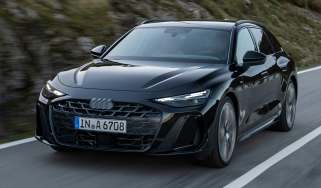Kia Ceed Sportswagon estate - MPG, running costs & CO2
Every version is affordable to own and run, with few surprises looming on the horizon
The Kia Ceed Sportswagon should be affordable to run in any form; the sole 1.5-litre petrol and any of the discontinued petrol and diesel options return excellent fuel economy. The plug-in hybrid is the most efficient model but is also more expensive to buy, and it isn't available for the facelifted Ceed yet. Nearly all costs involved with Ceed Sportswagon ownership should be reasonable though, with affordable road tax and repairs covered by a long seven-year warranty.
Kia Ceed Sportswagon MPG & CO2
While not currently available, the 1.0-litre T-GDI three-cylinder model offers strong efficiency and is the cheapest to buy. Despite having a fairly large car in tow, this can return up to 53.3mpg according to Kia's figures – almost the same as the hatchback, presumably because of its aerodynamic shape. Meanwhile, CO2 emissions starting at 121g/km place it in a mid-tier Benefit-in-Kind (BiK) band for company-car drivers.
With more power, the 1.5-litre T-GDI steps up the performance, but fuel economy drops to 50.4mpg. CO2 emissions are 127-131g/km depending on the trim level, giving both models a fairly high BiK banding.
The only diesel was a 1.6-litre CRDi, which returns up to 62.8mpg and emits 121g/km. It uses 48-volt mild-hybrid technology to help achieve this, storing some energy recuperated while braking to power the car's electronics and give the engine a small boost while accelerating. Unlike the petrol engines, this also requires occasional top-ups of the emissions-reducing AdBlue fluid.
More reviews
Going by the pre-facelift car's figures, the petrol plug-in hybrid would be by far the most efficient on paper, combining a 1.6-litre GDi petrol engine, an electric motor and a battery. Officially, the pre-facelift Ceed Sportswagen PHEV could manage up to 29 miles of pure-electric running, a figure that we were able to achieve in real-world driving. The battery takes around two hours to fully charge when plugged into a 3.3kW home wallbox.
With the battery and petrol engine combined, the PHEV was officially capable of up to 188.3mpg, a figure which was likely to fall to around 40-50mpg in real-world driving. Its CO2 emissions are 33g/km, which makes it an excellent choice for company-car drivers thanks to a low BiK that undercuts the standard models by a large margin.
Every petrol and diesel-powered version of the Kia Ceed Sportswagon costs the standard rate of tax from the second year onwards, with the plug-in hybrid qualifying for a small discount.
Insurance groups
The Ceed Sportswagon should prove inexpensive to insure, thanks to groups that span from 12-13 for the 1.0-litre and 15 if you choose the diesel. The 1.5-litre T-GDI engine elevates it slightly to group 18 out of 50, but that's still lower than some superminis.
Warranty
You'll probably already know that Kia offers a lengthy seven-year warranty, because it's a major selling point for the brand, and rightly so. As long as you don't use up its 100,000-mile cap it can even be transferred to the next owner, boosting resale values. Rivals Ford, Volkswagen and SEAT offer just three years of complimentary cover, while Hyundai throws in five.
Servicing
Customers can purchase maintenance via the Kia Care scheme, buying set numbers of services to cover the car for up to seven years. Choose a three-year package and it's likely to set you back around £300, while MOTs for cars over three years old come in at £35.












